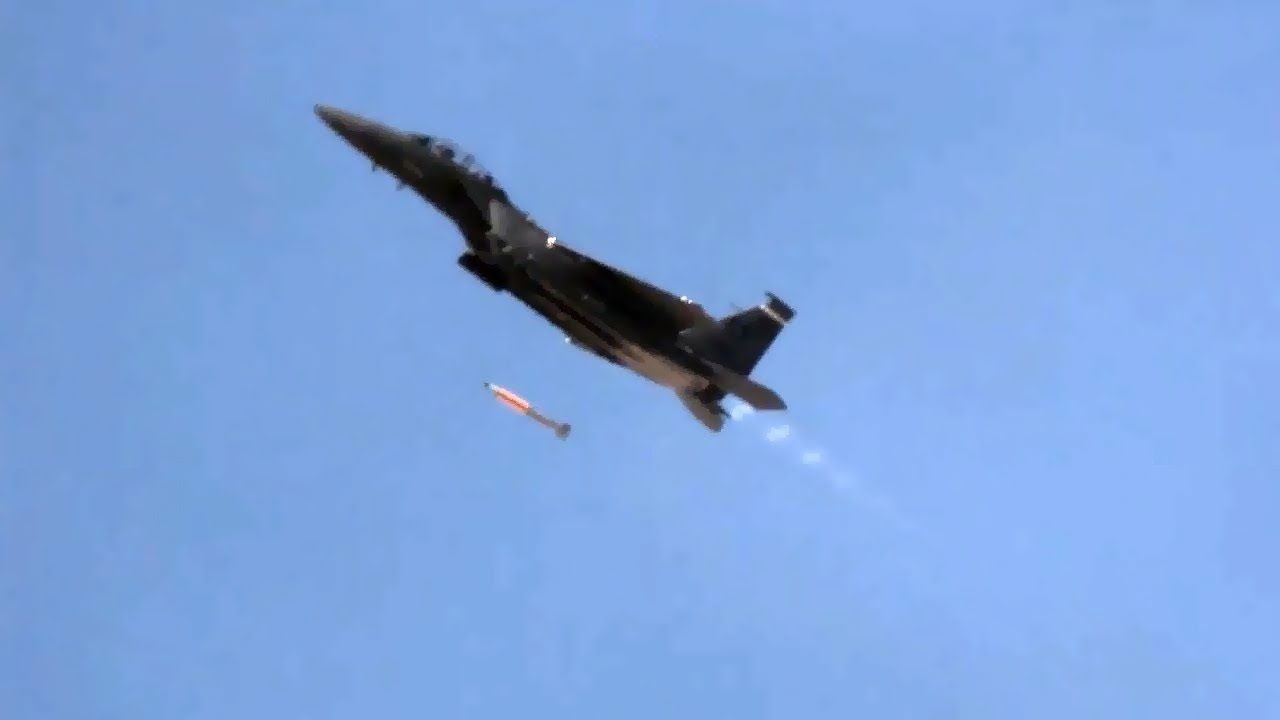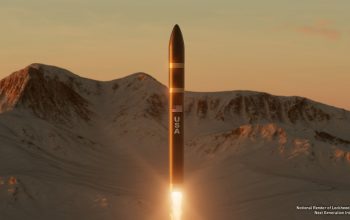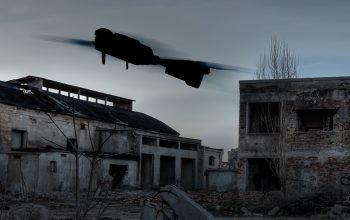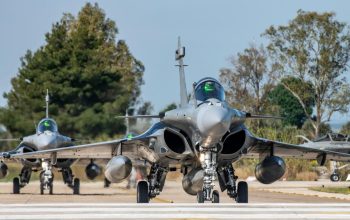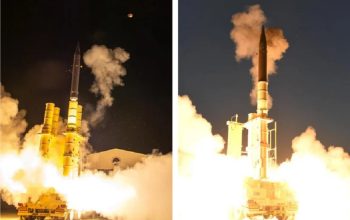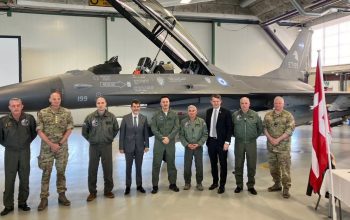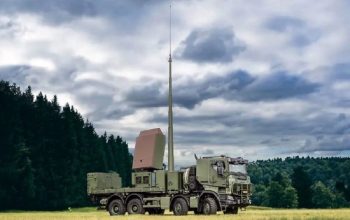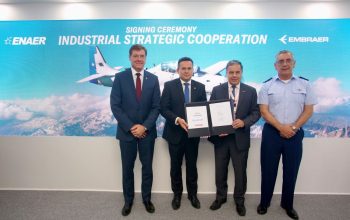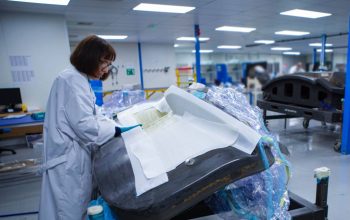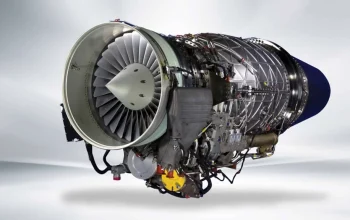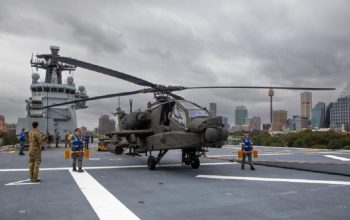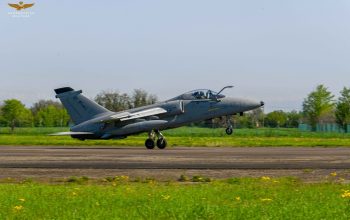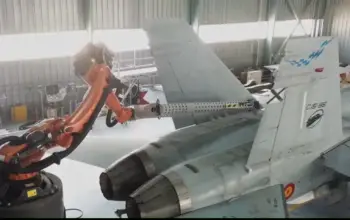Dropped from above 25,000 feet, the mock B61-12 nuclear gravity bomb was in the air for approximately 55 seconds before hitting and embedding in the lakebed, splashing a 40- to 50-foot puff of desert dust from the designated impact area at Sandia National Laboratories’ Tonopah Test Range in Nevada. That strike was the last in a series of flight tests designed to demonstrate the refurbished B61-12’s compatibility with the U.S. Air Force’s F-15E Strike Eagle jet fighter. The successful full-weapon system demonstration of the bomb’s compatibility with the jet increases confidence that it will always work when called upon by the president and never under any other circumstances.
The full-weapon system demonstration coordinated with Sandia’s partners included final flight tests — the fifth and sixth overall — showing the compatibility of the B61-12 and F-15E, the first aircraft to complete the series of compatibility flights. The compatibility testing is an essential part of the B61-12 Life Extension Program to refurbish, reuse or replace all components; extend the bomb’s service life by at least 20 years; and improve its safety, security and effectiveness. As part of the DOE/NNSA network of laboratories, Sandia is responsible for the design and engineering of non-nuclear components and production of custom electronics. Los Alamos is responsible for production of detonators and other components.
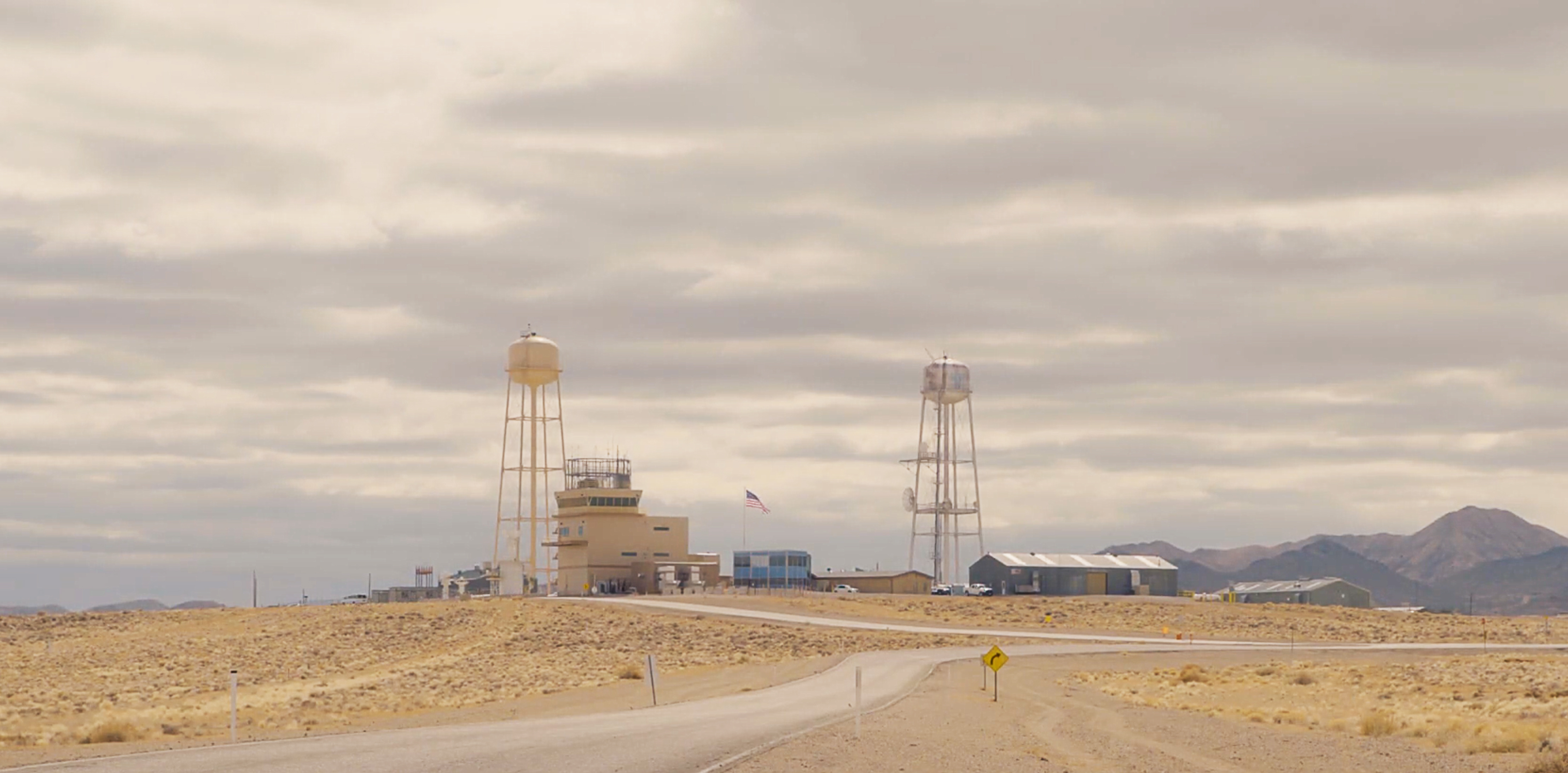
A life extension program allows scientists and engineers to address the aging of nuclear weapons components. Some components are reused by being requalified to go back into a weapon without change. Others that have aged are remanufactured using the original specifications. Sometimes the original technology is no longer available, and Sandia redesigns those parts using modern technology.The bomb, estimated at 12 feet long and weighing about 825 pounds, is being designed to be air delivered in either ballistic or guided-gravity drop modes. Along with the F-15E, the B61-12 will be certified for the Air Force’s B-2 strategic bomber, the dual capable F-16C/D fighter and, in the future, the fifth-generation F-35 fighter, as well as allies’ aircraft.
Sandia is the design and engineering lab for non-nuclear components of the nation’s nuclear stockpile, including the B61-12. In addition to non-nuclear component development, Sandia serves as the technical integrator for the complete weapon, ensuring that the system meets requirements as a full-weapon system. The early March demonstration of the fully functional weapon — containing non-nuclear and mock nuclear components — began with loading the weapon onto the fighter jet at Nellis Air Force Base near Las Vegas and ended with two flight tests at Tonopah Test Range. The demonstration was possible with coordination among Sandia, Los Alamos National Laboratory, the Kansas City National Security Campus, NNSA and the Air Force.


